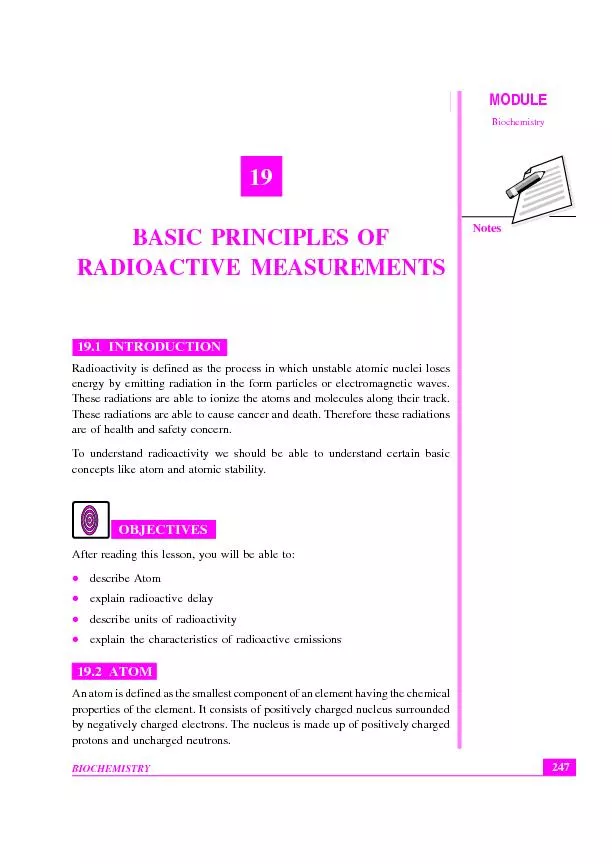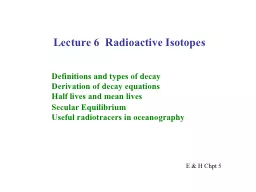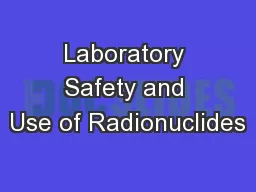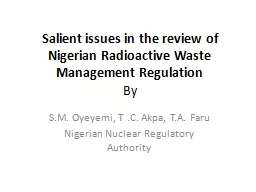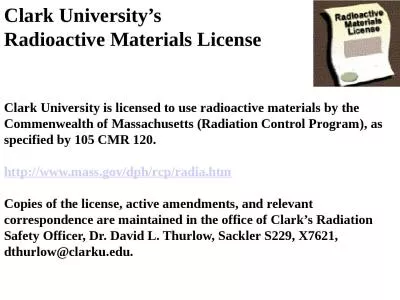PDF-Basic Principles of Radioactive MeasurementsBIOCHEMISTRY
Author : yoshiko-marsland | Published Date : 2016-07-18
191INTRODUCTION energy by emitting radiation in the form particles or electromagnetic wavesThese radiations are able to cause cancer and death Therefore these radiationsTo
Presentation Embed Code
Download Presentation
Download Presentation The PPT/PDF document "Basic Principles of Radioactive Measurem..." is the property of its rightful owner. Permission is granted to download and print the materials on this website for personal, non-commercial use only, and to display it on your personal computer provided you do not modify the materials and that you retain all copyright notices contained in the materials. By downloading content from our website, you accept the terms of this agreement.
Basic Principles of Radioactive MeasurementsBIOCHEMISTRY: Transcript
Download Rules Of Document
"Basic Principles of Radioactive MeasurementsBIOCHEMISTRY"The content belongs to its owner. You may download and print it for personal use, without modification, and keep all copyright notices. By downloading, you agree to these terms.
Related Documents

